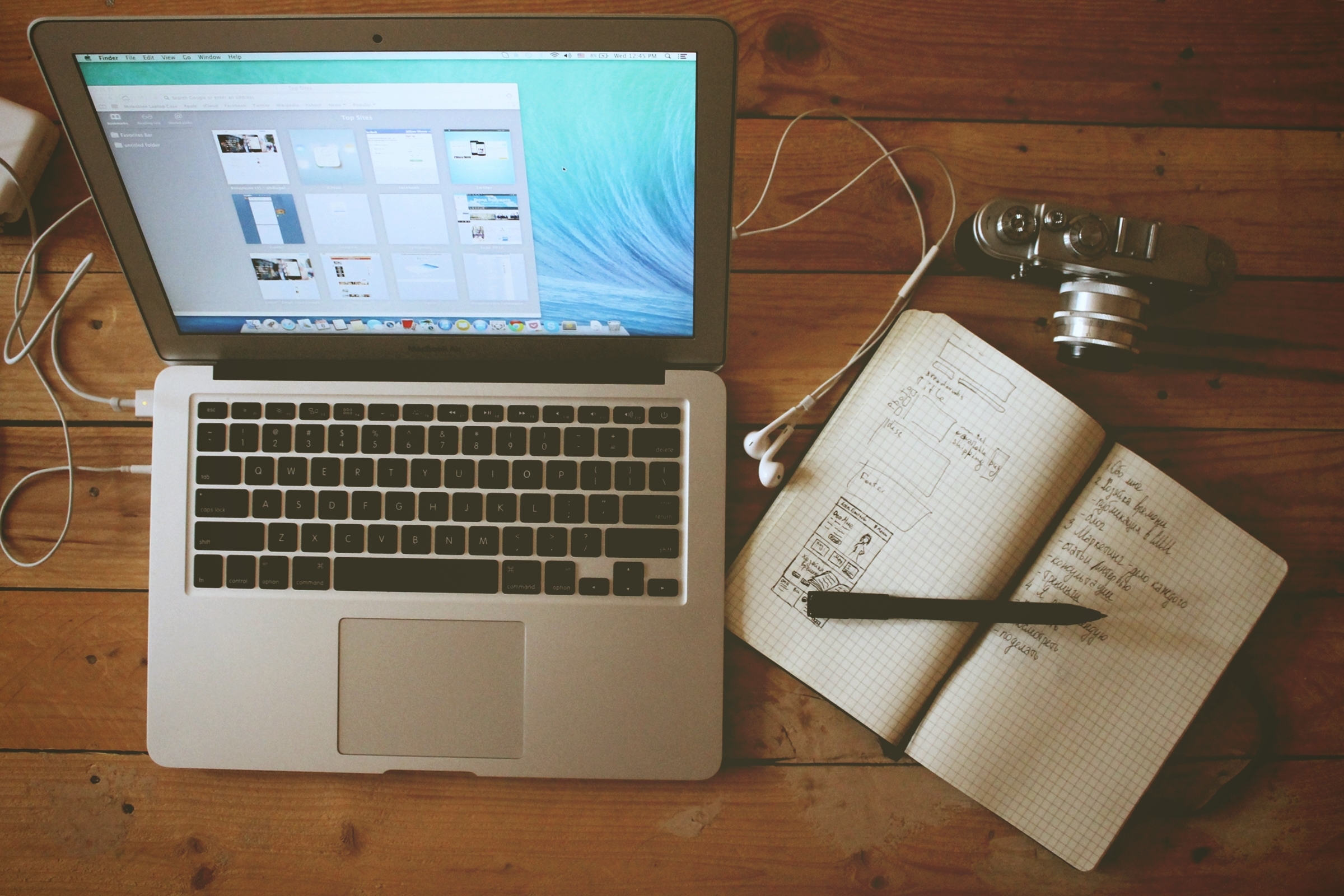Ink or Light, Picas or Pixels – Designing for Magazines vs Social Media

 We’re really lucky here – the people we get to work with every day are as weird, and interesting as they are incredibly talented. So, we’re using this space to let you in on the rants and ramblings that happen in the office. A bit of insight into minds of the people just twisted enough to build and execute dozens of digital campaigns, simultaneously, each completely differently, with just as many different personalities at any given time. The first of these characters is Randy – our Graphic Designer who, although his digital talents are many, started his career building designs for print. His perspective on the industry is fascinating, and don’t let him convince you otherwise – he’s just as much as a tech-nerd as the rest of us. – Conner
We’re really lucky here – the people we get to work with every day are as weird, and interesting as they are incredibly talented. So, we’re using this space to let you in on the rants and ramblings that happen in the office. A bit of insight into minds of the people just twisted enough to build and execute dozens of digital campaigns, simultaneously, each completely differently, with just as many different personalities at any given time. The first of these characters is Randy – our Graphic Designer who, although his digital talents are many, started his career building designs for print. His perspective on the industry is fascinating, and don’t let him convince you otherwise – he’s just as much as a tech-nerd as the rest of us. – Conner
What is easier: turning pages or clicking your way through a website? Which experience has more to offer? I’m a firm believer that the experience is of 100% equal value. What you aren’t holding in your hand, smelling, touching, placing, keeping – is made up for with an infinity of writing, clever videos, an abyss of linkage, and your never ending ability to click share instead of getting out the scissors and heading to the photocopier. This has changed the way we think about and absorb the design placed in front of us.
Personally, when i was a lot younger I only ever aspired to design for magazines. In my day, that was actually a thing. You could go to school and learn how to design things for an offset press using ancient copies of Quark and Photoshop and a Pantone book. You felt like a god when you completed these archaic tasks and ended up with a forty page glossy unit in your hands. And you only had a week to do it.
Now, website projects go on for months, maybe even years and thereafter they are really never finished (this very site is a great example of that). Designs can change dozens of times, there can be dozens of cooks in the kitchen, and making the simplest decisions can become a sort of hell. There has never been elaborate QA spreadsheets for a cover story spread or a Letter From The Editor. The harsh hammer of judgement happened only once when you flipped the pages for the first time and saw that you forgot a comma, or didn’t account for bleed. It hurt. It really did – but you closed it, put it down, and moved on to the next issue.
What I’m really getting at is how our relationship with everyday media design has changed. Both as a designer and a user (note: user vs. reader) in every single imaginable aspect. My relationship with my editor is now secondary to my relationship with my developer (hey, Steve). Instead of getting my reader to admire my glossy layout and the way I so cleverly used a drop cap… I’m asking Steve “how does this look in Chrome on your new LG? Is the menu intuitive enough? let’s see this on ipad.”
I’m not complaining. Quite the opposite, in fact. I love the internet. I love pixels, and I still really like being on the creation side of the things people see and interact with on a daily basis without really even knowing they are. In the age of the tablet, people still can sort of pick up our creations and flip the pages. But my life has changed. My table of contents has become elaborate information architecture. Your dog eared article is now an anxiety-inducing list of links. For better or for worse, the pixel is the new inch – and it’s here to stay.
This all probably sounds a bit cynical about the age of digital design. Maybe because of the generation of creatives in media and publishing that I come from is (just a little bit). Although, if i’m being honest, in my day-to-day work now as primarily a digital designer – I love the work I do. The things I make are still just as important as they always were. The relationship people have with the creative and its medium is much, much different. Ironically, the tools I use are identical though. I still usually start on paper. I still use the exact same software (yes, newer versions but still basically the same thing) and I use my Mac just like I always have.
The variety of things I work on is much more vast though. I don’t have to force myself through nearly as many technical checkpoints either. Mainly, I love working with digital assets on any scale because of the many unique ways they get put out into the world. They STAY out in the world instead of probably just ending up in a recycle bin or landfill at the end of the lifecycle. This blog post will live on much longer than if it was in an industry magazine and will potentially reach an infinitely larger group of people that then have at the least the chance to know it exists, and maybe even read it.
What we can take away from all of this is pretty straightforward actually. Good design, whether digital or in print is only as good as how well you really understand the audience you are designing it for. No matter what, the most important thing to keep in mind is that the medium is really only ever half the message.


